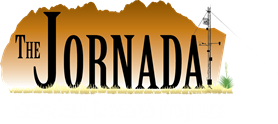| Title | Long-term declining trends in Chihuahuan Desert forage production in relation to precipitation and ambient temperature |
| Publication Type | Journal Article |
| Year of Publication | 2019 |
| Authors | McIntosh MM, Holechek JL, Spiegal S., Cibils AF, Estell RE |
| Journal | Rangeland Ecology and Management |
| Volume | 72 |
| Issue | 976-987 |
| Date Published | 11/01/2019 |
| ARIS Log Number | 359834 |
| Keywords | climate change, forage, grazing capacity, NDVI, phenometrics |
| Abstract | Rising temperatures and more frequent droughts are posing new challenges to range livestock producers in the southwestern United States and many other parts of the world. We analyzed a 49-year time series (1969-2017) of precipitation, ambient temperature, and perennial grass production (PGP) as well as 14 years (2001-2014) of MODIS-derived vegetation phenometrics at a site in the Chihuahuan Desert of New Mexico. PGP was positively associated with December through September precipitation (r = 0.74; P < 0.05) but negatively associated
with spring and summer (Mar-Sep) maximum average ambient temperature (r = -0.54; P < 0.05). PGP decreased by 38% in the second (1994-2017) compared to first half (1969-1993) of our study (228 ± 36.75 vs. 141 ± 21.97 kg DM*ha-144 ; P < 0.01). Precipitation was lower and more erratic in the second half of the time series decreasing by 21% (264.88 ± 1.30 vs. 211.13 ± 16.67 mm; P = 0.01). Conversely, mean maximum and mean ambient temperatures were higher during the 1994-2017 period (max T: 24.48 ± 0.14 vs. 25.22 ± 0.13°C; P < 0.01; mean T:14.45 ± 0.13 vs. 15.04 ± 0.13°C; P < 0.01). MODIS-derived NDVI analysis showed that growing seasons began and ended later and became shorter (P < 0.05) over the 14 years analyzed. During this period, increasing maximum summer (Jun-Sep) ambient temperatures were associated with decreasing growing season NDVI values (P < 0.01). Over the 49-year study period, Chihuahuan Desert rangelands at our research site lost 38% of grazing capacity. Nine drought years occurred in the second half of our study compared to two in the first half. Our research supports predictions by climate scientists that more frequent droughts and lower as well as more erratic precipitation will adversely impact grazing capacity of rangelands in the southwestern United States. |
| URL | files/bibliography/19-025.pdf |
| DOI | 10.1016/j.rama.2019.06.002 |


